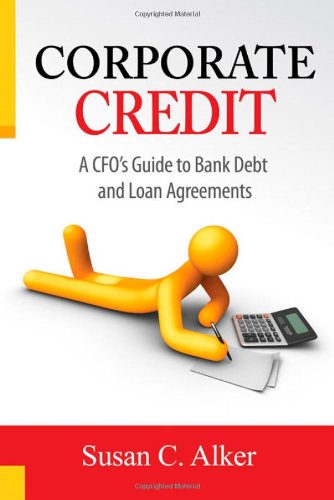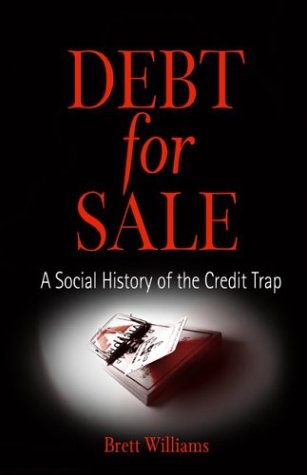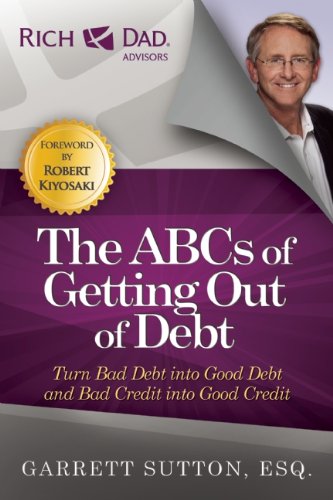[Credit] Videos
A helpful guide for CFO’s and bankers alike, this book demystifies the contents of a typical corporate loan agreement and helps make the entire loan process easier to deal with. The book outlines the steps involved in getting a loan and explains – in plain and easy-to-understand language – what the terms of the loan agreement mean. CFO’s will learn which terms in the agreement could create problems for the company and how to take steps to prevent that. And corporate borrowers and lenders alike will gain a better understanding of the steps involved in preparing to close the deal and how to make it all go smoothly.
Credit and debt appear to be natural, permanent facets of Americans’ lives, but a debt-based economy and debt-financed lifestyles are actually recent inventions. In 1951 Diners Club issued a plastic card that enabled patrons to pay for their meals at select New York City restaurants at the end of each month. Soon other “charge cards” (as they were then known) offered the convenience for travelers throughout the United States to pay for hotels, food, and entertainment on credit. In the 1970s the advent of computers and the deregulation of banking created an explosion in credit card use—and consumer debt. With gigantic national banks and computer systems that allowed variable interest rates, consumer screening, mass mailings, and methods to discipline slow payers with penalties and fees, middle-class Americans experienced a sea change in their lives.
Given the enormous profits from issuing credit, banks and chain stores used aggressive marketing to reach Americans experiencing such crises as divorce or unemployment, to help them make ends meet or to persuade them that they could live beyond their means. After banks exhausted the profits from this group of people, they moved into the market for college credit cards and student loans and then into predatory lending (through check-cashing stores and pawnshops) to the poor. In 2003, Americans owed nearly $8 trillion in consumer debt, amounting to 130 percent of their average disposable income. The role of credit and debt in people’s lives is one of the most important social and economic issues of our age.
Brett Williams provides a sobering and frank investigation of the credit industry and how it came to dominate the lives of most Americans by propelling the social changes that are enacted when an economy is based on debt. Williams argues that credit and debt act to obscure, reproduce, and exacerbate other inequalities. It is in the best interest of the banks, corporations, and their shareholders to keep consumer debt at high levels. By targeting low-income and young people who would not be eligible for credit in other businesses, these companies are able quickly to gain a stranglehold on the finances of millions. Throughout, Williams provides firsthand accounts of how Americans from all socioeconomic levels use credit. These vignettes complement the history and technical issues of the credit industry, including strategies people use to manage debt, how credit functions in their lives, how they understand their own indebtedness, and the sometimes tragic impact of massive debt on people’s lives.
Product Features
- ISBN13: 9780812238174
- Condition: New
- Notes: BRAND NEW FROM PUBLISHER! 100% Satisfaction Guarantee. Tracking provided on most orders. Buy with Confidence! Millions of books sold!
In difficult times, debt can be a matter of life and death, happiness and despair. Controlling your debt can bring order and calm. Mastering debt can bring wealth and success. As bestselling Rich Dad/Poor Dad author Robert Kiyosaki says, ?Good debt makes you rich and bad debt makes you poor.”
The ABCs of Getting Out of Debt provides the necessary knowledge to navigate through a very challenging credit environment. A Rich Dad’s Advisor and best selling author of numerous business books, Garrett Sutton, Esq. clearly writes on the key strategies readers must follow to get out of debt. Unlike other superficial offerings, Sutton explores the psychology and health effects of debt. From there, the reader learns how to beat the lenders at their own game, and how to understand and repair your own credit. Using real life illustrative stories, Sutton shares how to deal with debt collectors, avoid credit scams, and win with good credit.
?The reason Garrett Sutton’s book is so important is that like it or not, debt is a powerful force in our world today. The financially intelligent are using debt to enrich themselves while the financially uneducated are using debt to destroy their lives.”- Robert Kiyosaki
The times call for a book that offers hope and education on mastering credit and getting out of debt.
Feeling overwhelmed by your debts? If you’re ready to regain your financial freedom, feeling the squeeze of the housing bust or simply get smarter about managing your money, you’ll find everything you need in this complete guide. Solve Your Money Troubles shows you how to:
. prioritize debts
. create a budget
. negotiate with creditors
. stop collector harassment
. challenge wage attachments
. contend with repossessions
. respond to creditor lawsuits
. qualify for a mortgage
. rebuild credit
. decide if bankruptcy is the right option for you
To make the process easier, Solve Your Money Troubles includes sample letters to creditors, as well as worksheets and charts to calculate your debts and expenses.




